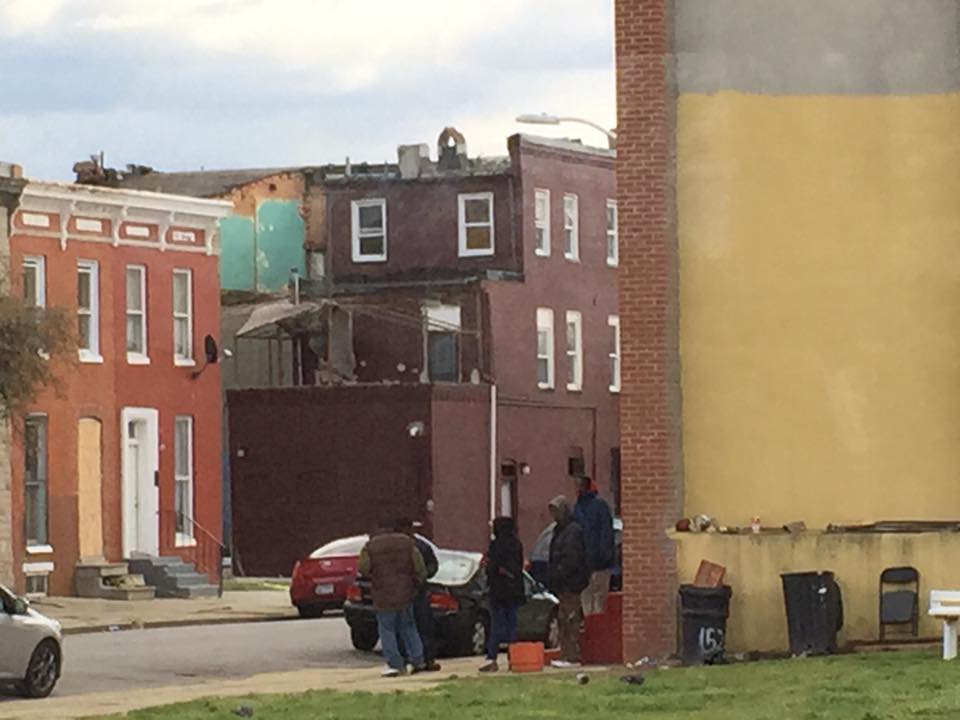The urban jungle
Boarded-up tenement. Residence. Boarded-up tenement. Boarded-up tenement. Residence.
Welcome to West Baltimore.
I’ve seen urban decay before, but nothing like this. Yesterday my 13-year-old son and I had the privilege of a guided tour through the worst examples of poverty and despair and hopelessness I’ve ever seen in this country. Worse than Newark, worse than areas of the Bronx or Coney Island, worse than the Atlantic City Inlet, certainly far worse than South Central Los Angeles, worse than, well, any redlined written-off ghetto anywhere near you.
In most of those places, whole neighborhoods are gone — people have moved out. Not in Balmer. In Balmer, the vacant and nailed-shut houses are threaded through the remaining living spaces, like a cancer woven around and penetrating essential organs. There’s still healthy tissue in there — the occasional house with a clean front porch, or bunting, or a mailbox with mail in it. But the dark spots are everywhere.
There’s also nothing to do. By that I mean there are no jobs. Because there are no businesses. There are still people living there, which ought to equal business opportunity (bearing in mind the entrepreneur Magic Johnson’s quote that “there’s always money to be made in the ghetto.”). But no, nothing. And later I learned that the area isn’t just a jobs desert — it’s also a transportation desert. There’s no subway or train or even bus line that comes here; in many cases, if someone could find a job, he’d have to walk two miles to get there. So there’s no way to get to a job, and there aren’t any jobs from neighborhood businesses because there aren’t any neighborhood businesses. Except one kind. The corner liquor store. Found on every corner. Just as you’ve seen on “The Wire.”

The city has counted 15,000 abandoned buildings. But there may be as many as 40,000. They can’t be sure. And judging purely from the evidence of their inner city, I wouldn’t rely on city officials to generate an accurate count because they don’t seem reliable in other ways. There’s also — of course! — a large homeless population that fluctuates between 3,000 and 30,000 people a night. So you’ve got 15,000-40,000 empty buildings — and 3,000-30,000 people sleeping outside. I don’t need to say anything further; this makes its own statement.
I did get to meet a number of hard-working courageous people in the private and non-profit sectors who are trying to improve the situation. I’m impressed with the work of some of them, and I’m sure that this situation can be improved, because it’s hard to imagine it worse. Finding a way to replace some of the 100,000 jobs Baltimore has lost in the last 50 years would be an excellent start. Finding a way to help neighborhood businesses sprout up with be great too.
I asked my son what was his impression of West Baltimore and first he said that there’s nothing for people to do there. (Especially children: we didn’t see any parks, but we did see signs mandating “no ball playing here.”) Then he shared the image that will most stay with him. In some of these buildings, he said, with their windows shattered or a roof collapsed or a wall knocked out, he saw trees growing inside. Whole, large, growing, thriving trees.
West Baltimore is becoming a literal urban jungle.




April 12th, 2016 at 1:08 am
For me the sure sign of an urban jungle is not the untended yards or boarded houses, but groups of young people hanging out on porches and street corners, looking bored and perhaps a bit predatory.
April 27th, 2023 at 3:28 pm
유익한 IT SNS 뉴스
leewochner.com » Blog Archive » The urban jungle